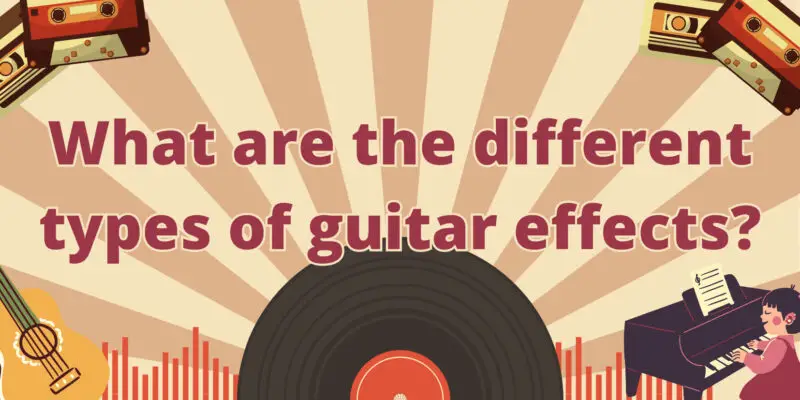Guitar effects pedals are the magical devices that transform a simple guitar’s sound into a symphony of sonic possibilities. These ingenious gadgets can take your music from clean and pristine to wild and otherworldly. In this article, we’ll embark on a journey through the diverse world of guitar effects and explore the different types that allow guitarists to craft their unique tones.
- Distortion and Overdrive Effects
Distortion and overdrive effects are perhaps the most fundamental and iconic of all guitar effects. They add harmonically-rich saturation to your signal, creating a warm, crunchy sound associated with rock, blues, and countless other genres. Classic examples include the Boss DS-1 and the Ibanez Tube Screamer.
- Delay Effects
Delay effects pedals create echoes by repeating and delaying the guitar signal. From slapback delay to expansive, ambient textures, delay effects are essential for creating depth and dimension in your sound. The TC Electronic Flashback and the Strymon Timeline are renowned choices in this category.
- Reverb Effects
Reverb effects replicate the natural sound reflections in different environments, adding space and depth to your playing. Spring, plate, hall, and shimmer reverbs can transport your sound to various sonic landscapes. Notable options include the Electro-Harmonix Holy Grail and the TC Electronic Hall of Fame.
- Modulation Effects
Modulation effects encompass chorus, phaser, flanger, and tremolo pedals. They add dynamic motion and texture to your sound, ranging from subtle to psychedelic. Classics like the MXR Phase 90 and the Boss CE-2 have left an indelible mark in this category.
- Wah-Wah Effects
Wah-wah pedals create a distinctive, vocal-like sound by sweeping through a specific frequency range. By rocking the pedal back and forth, guitarists can shape their tone dynamically. The Dunlop Cry Baby and Vox V847 are iconic wah-wah pedals.
- Fuzz Effects
Fuzz pedals generate thick, saturated tones with a unique, fuzzy edge. They’re favored by artists seeking a raucous, vintage sound. The Big Muff Pi by Electro-Harmonix and the Fuzz Face are legendary fuzz pedals.
- Pitch and Octave Effects
Pitch and octave pedals alter the pitch of your guitar signal, creating harmonies or octave-up/down effects. The Digitech Whammy and Electro-Harmonix POG are famous for their pitch-shifting capabilities.
- Looper Effects
Looper pedals allow guitarists to record and layer loops, enabling them to play over themselves. These are fantastic tools for solo performances and songwriting. The Boss RC-3 and the TC Electronic Ditto Looper are popular choices.
Conclusion
Guitar effects pedals are the painter’s palette for musicians, offering an endless array of sonic colors and textures. Whether you’re chasing a classic rock sound, experimenting with avant-garde tones, or creating ambient landscapes, there’s a pedal out there to help you achieve your musical vision. By understanding the various types of guitar effects and how they work, you can unlock a world of creativity and innovation, making your guitar truly sing in ways limited only by your imagination.

